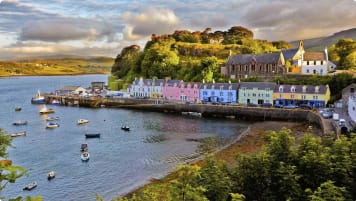The Birth of Scotland
Escorted small group tours for senior couples and mature solo travelers seeking to learn. Article about Scotland and you can learn more about the Jacobites, Orkney or Shetland islands as well Edinburgh, Aberdeen and more.
13 Aug 21 · 10 mins read
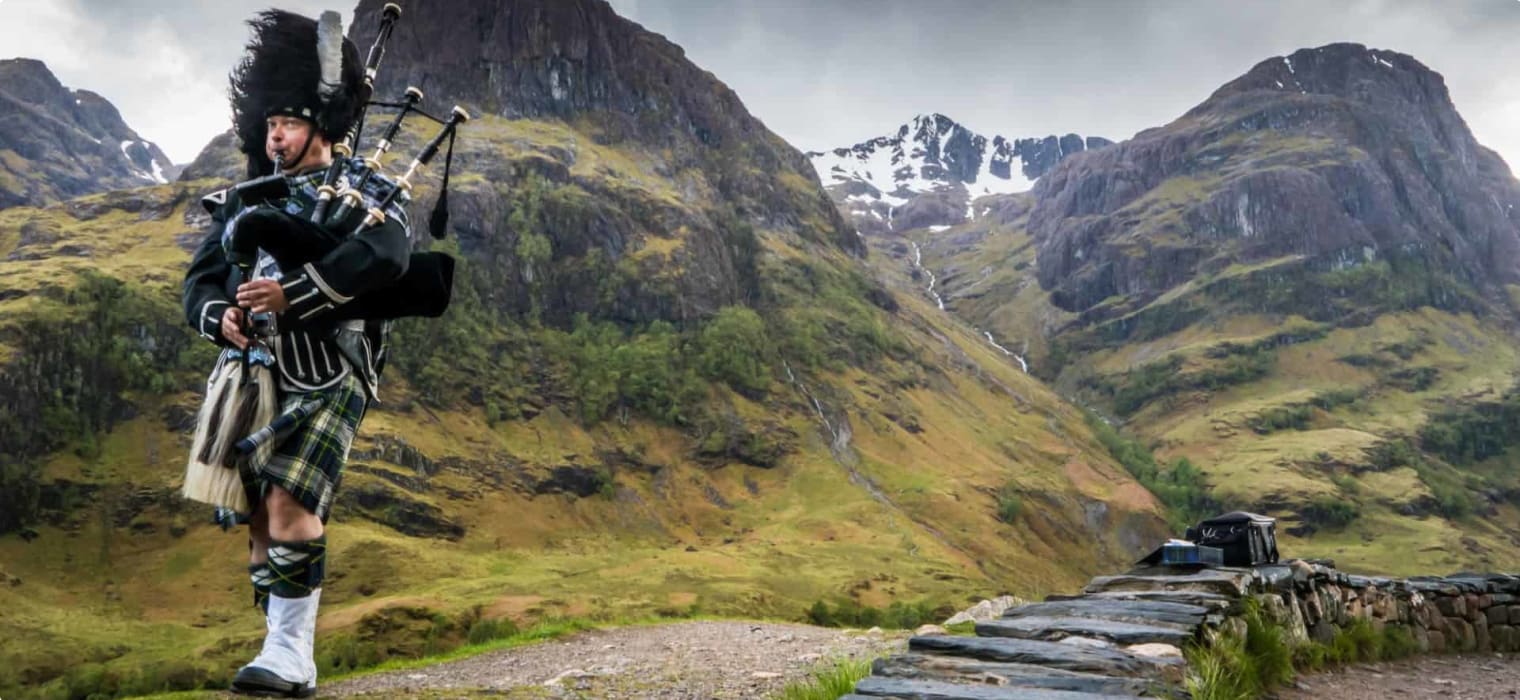
The Birth of Scotland
In A History of the Scottish People (1560-1830), T.C. Smout describes Scotland as an isolated, wild place. “More than half the land was barren mountain,” he says, and, quoting G.W.S Barrow, adds: “if one takes the modern map of Scotland and considers the enormous number of names which contain an element denoting marsh or bog, the wonder is that any room was found at all for permanent habitation” (Smout, 1969, p. 17).
All the same, the region we now call Scotland was a land highly contested–and divided–throughout the centuries. This article will look at the birth of Scotland from ancient times, and the changes that emerged in its social and political structure after the Battle of Hastings.
This article is based on the first chapter (“The Birth of the Scottish Nation”) of T.C. Smout’s A History of the Scottish People (1560-1830) published by William Collins Sons & Co Ltd in 1969, as well as other materials linked throughout this piece.
This is part of our collection of Scotland-related articles that we share as backgrounders before you go on a Scotland tour with us, or to simply help you as you firm up your travel plans. All of those articles can be found here.
The Scotii
The name Scotland derives from the Latin term Scotia (“land of the Scotii”). “Scotii” (or simply Scoti) was a term used by the Romans to refer to a Celtic tribe from what is now Ireland, who attacked the forces of Roman Britain. Caledonia was also used to refer to the region that is now Scotland, derived from Caledoni, which was what the Romans called the Celtic tribe who had settled there. (The Caledoni has also been referred to as the Picti or the Picts.)
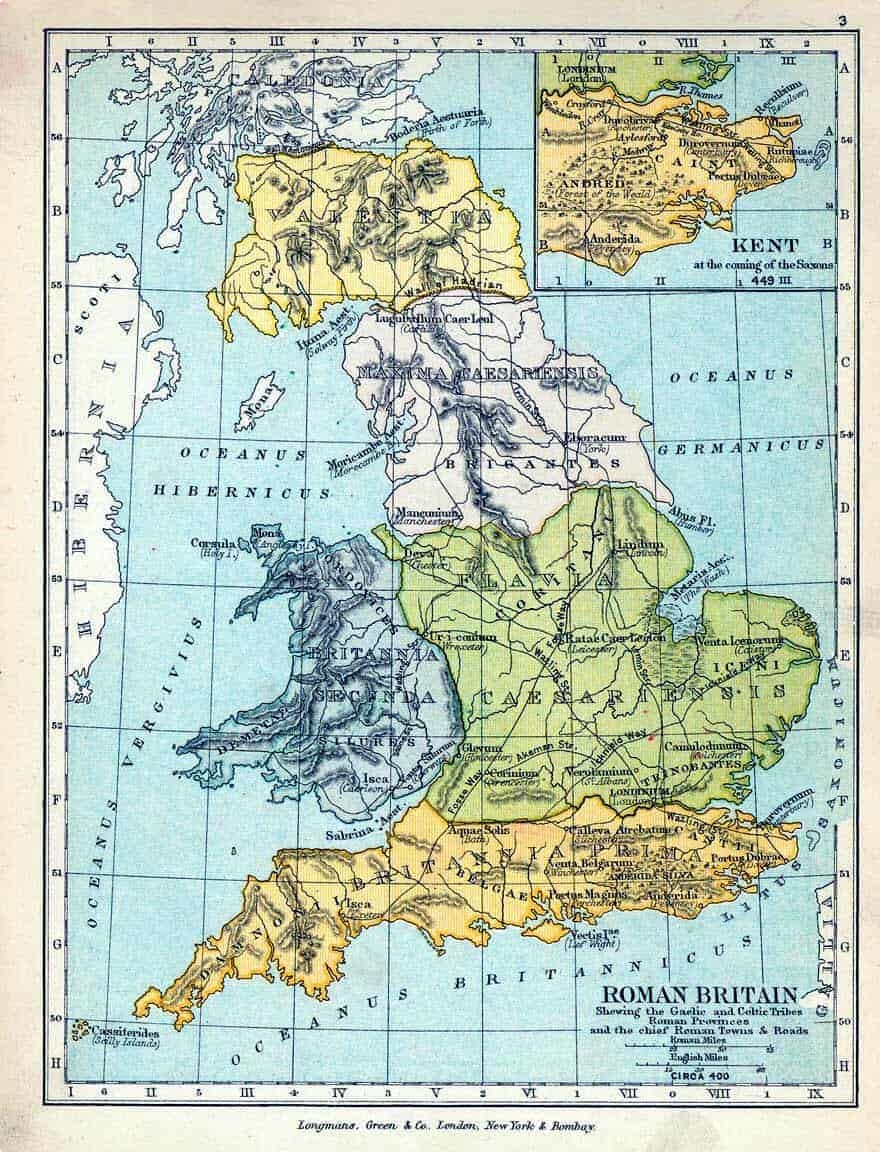
Though Scoti and Scotia were originally the Roman terms used to refer to the tribe and the region that is now Ireland, Anglo-Saxon chroniclers began using the terms to refer to the Gaelic-speaking parts of Scotland in the 11th century. Usage of the Scots and Scotland to refer to the people and the country (as a whole) became common in the Late Middle Ages, where “we hear of the law of the ‘Britons and the Scots'” (Smout, 1969, p. 20).
Celts, Romans, Picts, Vikings in Scotland
The Celts arrived in Scotland during the Iron Age (circa 500 BC). Our knowledge of this group of tribes come to us filtered through Roman eyes, as it was the Romans who first chronicled their lifestyles and fighting prowess.
The Romans invaded Britain in 43 AD, but they were unsuccessful in fighting the Celtic tribes in the north. Julius Agricola, a Roman governor, marched into what is now Scotland around 80 AD and spent four years trying to subdue the tribes. Emperor Hadrian decided fighting the Celts was futile and pulled back, building Hadrian’s Wall around 122 AD in England to mark the northern limit of Roman Britain.
The Romans abandoned Britain around 410 AD, and the region was settled by other invading parties, such as the Vikings and the Germanic Anglo-Saxons. The Vikings would have a long and lasting presence in certain parts of Scotland: Norse earls would rule the Hebrides until 1266, and the islands of Shetland and Orkney would remain with the Vikings until it was annexed to Scotland as part of a dowry in 1472. (Read more in our article on the Shetland Islands.)
Before the Vikings, Scotland was settled by the Picts, who were said to have migrated from Scythia (Scandinavia) before settling and forming powerful kingdoms in what is now northern Scotland.
Dalriada and the Kingdom of Alba
The Viking invasions may have weakened the Picts’ forces. While the Picts were able to thwart the Romans for many centuries, in 843 AD, Kenneth MacAlpin, crowned King Kenneth I of the Kingdom of Dál Riada (or Dalriada) crushed their resistance and also became king of the Picts.
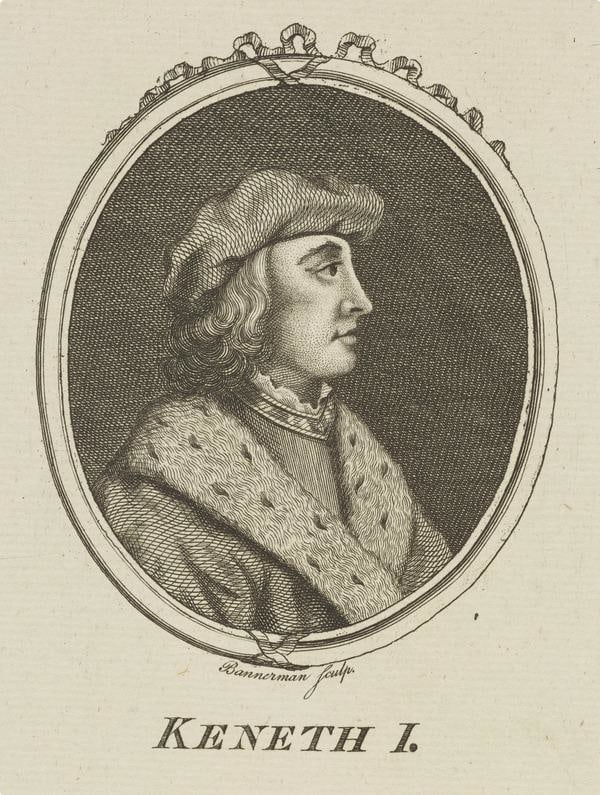
Dalriada was composed of parts of northeastern Ireland and western Scotland. The union of Dalriada and Pictish lands in northern Scotland formed the Kingdom of Alba, which became the starting point of the Scots’ expansion of their territory.
With the kingdom unified, the English kings, still being attacked by Vikings, found it useful to enjoy a good working relationship with the kings of Alba, leasing them land–Cumbria and Lothian–which the kings of Alba later took over as their own. This expansion continued until what we know now as mainland Scotland became one political unit. Malcolm II, who was king from 1005 to 1034, became the first king to reign over land roughly corresponding to much of modern Scotland.
Alba remained isolated from the rest of Europe, and the Celtic way of life held sway. Ruled by a Gaelic-speaking dynasty, the kingdom operated under the Dalriadan clan system and used the Celtic system of succession called tanistry, wherein the king can be succeeded not only by his eldest son (as in the system of primogeniture) but by any male member of the derbfine (“true kin”) or family group.
Celtic Way of Life
Christianity came into Scotland in the 6th century, but its practise became also distinctly Celtic. The Celtic monk St Columba established a monastic community on the Isle of Iona in the Inner Hebrides in 563.
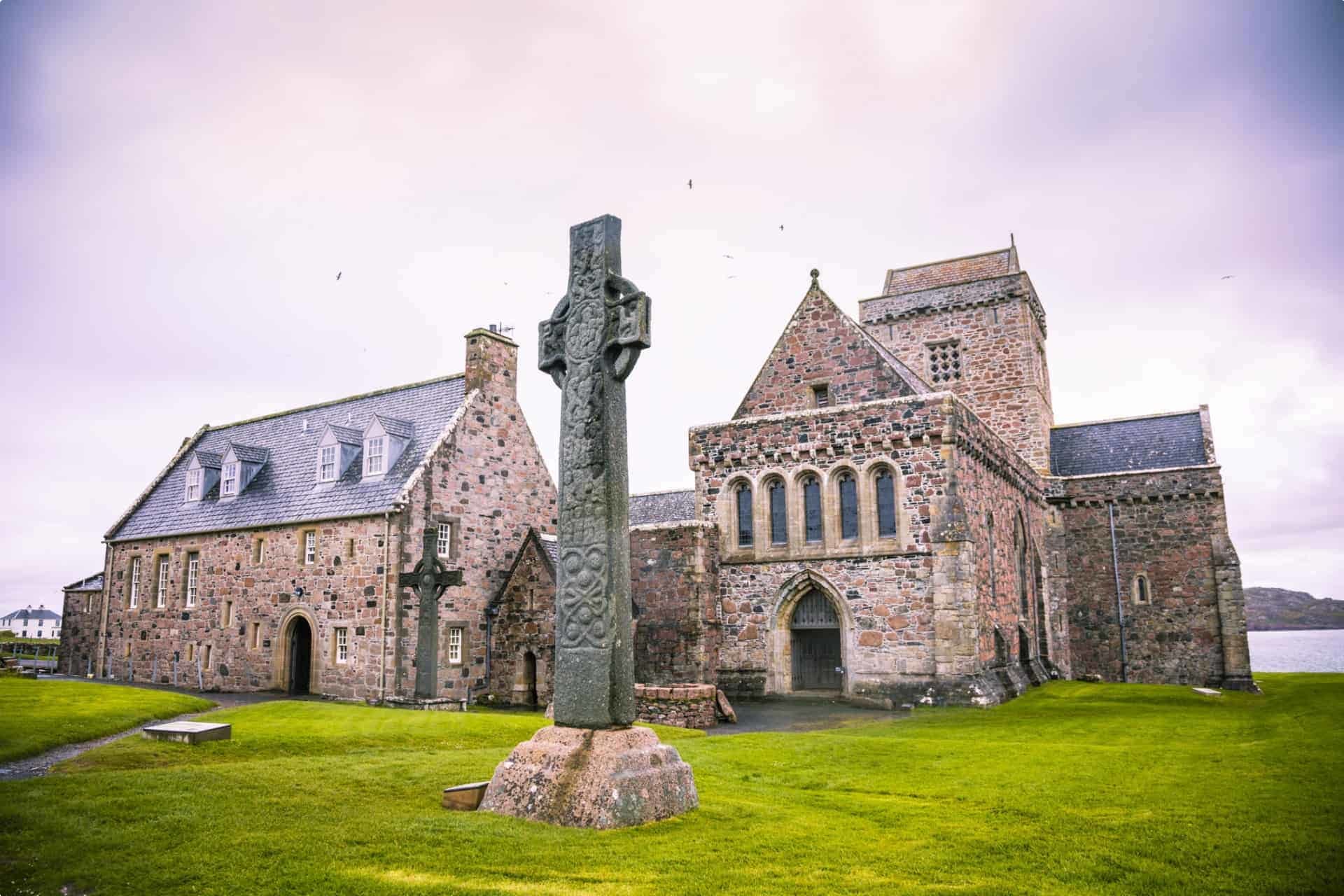
The Celtic church featured austere architecture, while its counterparts in England took the Roman basilica as inspiration and were bigger and grander. (You can read more in our article, “Understanding British Churches“.) The Celtic church also was not divided by territory (i.e. by diocese) and there was no division between the secular and regular clergy. As Smout says, “[t]he clergy…were by no means all celibate” (p. 20), while under Roman canon law, celibacy was expected of the clergy.
Following the Synod of Whitby, the Anglo-Saxon kingdom of Northumbria decided to follow Christianity as practised in Rome instead of the way it was practised by the Celtic missionaries. The Celtic church remained distinct from the Christian churches of England and continental Europe.
But these aspects of Scottish life would soon begin to change in 1066, when William the Conqueror defeated the Anglo-Saxons at the Battle of Hastings.
Scotland after the Battle of Hastings
The Normans were descended from the Vikings who had settled in the area of what would become Normandy (northern France). This meant that William the Conqueror’s victory began to build a cultural and political bridge between England and the rest of the Continent.
Feudalism
The Normans also introduced a new system of land ownership: feudalism. According to Smout, “Theoretically, feudalism is the antithesis of tribalism, since it based itself upon territorial units that had nothing to do with kinship…In a feudal country, all land was royal land[.]” (p. 22)
Shortly after the Battle of Hastings, William the Conqueror ordered the redistribution of land to his followers, causing the Anglo-Saxon aristocracy to lose its assets. William also commissioned a survey and audit to establish “who held what [land], in the wake of the Norman Conquest itself” and to “clarify what rights and dues were owed to the King”. The 913-page Domesday Book which surveyed England and parts of Wales was released in 1086, and painted a picture of a land now governed by feudal relationships.

“Feudal” comes from the word fief (also source of the word “fee”, or what we pay for a service), says Matthew A. McIntosh. A fief, which may contain one or more manors, was
“a piece of property which a person was given on condition that he (and occasionally she) performed certain services to the one who gave it. A person who received a fief was a vassal of the one who had given him the fief, who was his lord. In the agrarian society of medieval Europe, a fief was usually a specified parcel of land.” (source)
In this system of landholding, the King (William the Conqueror) was “at the top of the feudal ladder”, the land parcelled out into smaller and smaller units, from the land given by the King to the tenants-in-chief to the land they gave to their sub-tenants. As McIntosh says, “In feudal society everyone was supposed to have a lord – except the king at the top, who had no lord (at least, not on Earth: he was regarded as God’s vassal).”
“Norman in blood and heart”
While England and Wales were being divvied up by the Norman conquerors, Malcolm Canmore (Máel Coluim mac Donnchada) came to the throne of Scotland as Malcolm III in 1058. Taking as his second wife Margaret of the royal Saxons of England, Malcolm hoped to extend his kingdom into northern England. This made the Canmores receptive to Anglo-Norman influence.

When Malcolm III died in 1093, there were sustained attempts to block the application of succession by primogeniture instead of tanistry. Its application didn’t happen right away–Malcom III was succeeded by his brother and his son from his first marriage, before his three sons with Margaret could ascend the throne–but succession by primogeniture was eventually accepted by the Celtic kingdom. Within a generation after Malcolm III’s death, “the royal house was Norman in blood and heart” (Smout, 1969, p. 22).
Malcom III and Margaret’s youngest son David I (ruled 1124 to 1153) granted lands to Anglo-Normans, drawing them to Scotland. His successors–Malcolm IV and William the Lyon–pushed the policy further, and this was when feudalism in Scotland truly began in earnest. Feudalism, however, was not able to fully penetrate the Highlands, and a cultural divide began to emerge between the Highlanders and the Lowlanders.
Church Reform
David I’s mother, Margaret (later St Margaret of Scotland), began reforming the Celtic church to align it with the rest of the Christian world. According to Smout, she founded the first Benedictine monastery in Scotland which was staffed with monks from Canterbury, England’s historic cathedral city (Smout, 1969, p. 24). The architecture of the monastery, Dunfermline Abbey, later resembled the Norman cathedral at Durham.
David I established the organised church government into dioceses, and by 1200, bishops were ruling a defined area of territory, a far cry from the Celtic style of “desert hermit” monasticism (p. 24).
Sheriffdoms
In the civil arena, Norman Scotland (excluding the Highlands and the islands off the mainland) was divided into sheriffdoms, the same way Scotland was ecclesiastically divided into dioceses. The sheriff, a royal officer, heard court in the king’s name, managed defence, and collected rent for the crown, adding cohesion to the power and wealth of the Scottish king.
Burghs
David I also introduced the concept of burghs, which he copied from the English. A burgh is “a town, esp one incorporated by charter, that enjoyed a degree of self-government until the local-government reorganisation of 1975” (source). The earliest burghs in Scotland were Berwick, Roxburgh, Edinburgh, and Stirling, and the laws that governed them later became the basis of the laws that governed all other burghs in Scotland. The burghs was where the population traded their surpluses, and they became doorways to Europe, trading local goods with products from the Continent. The common laws governing the burghs added a thread of unity among the towns in Scotland.
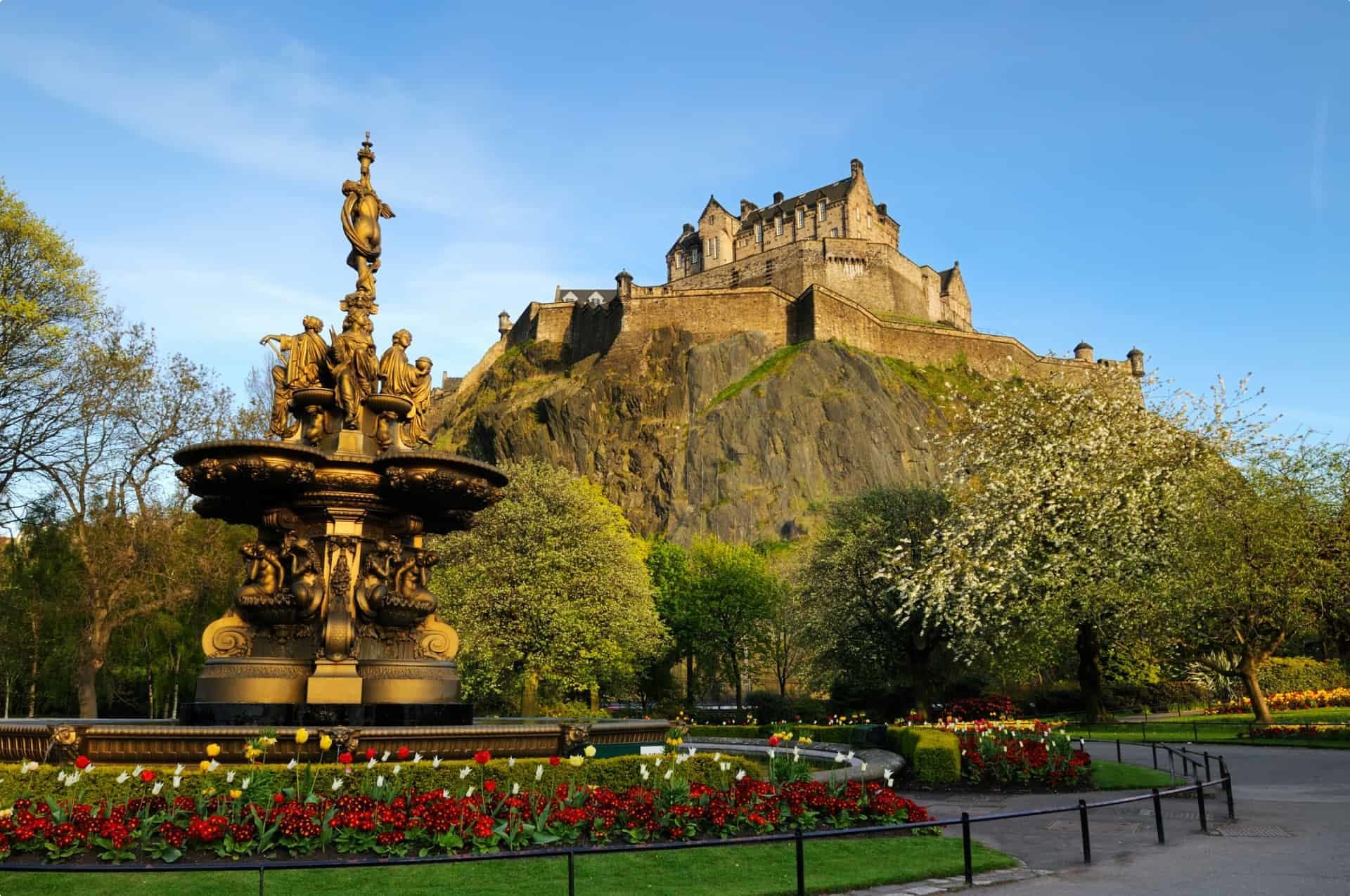
Burghs founded by the monarch were called “royal burghs”, but there were those also founded by the church and barons. Again, here was the Lowland and Highland divide: none of the burghs “were settled in the mountains or up the west coast between Clyde and the Pentland Firth” (Smouth, 1969, p. 28). Above all, the residents of the burghs were not Celtic, but predominantly English.
The Scottish Highlander
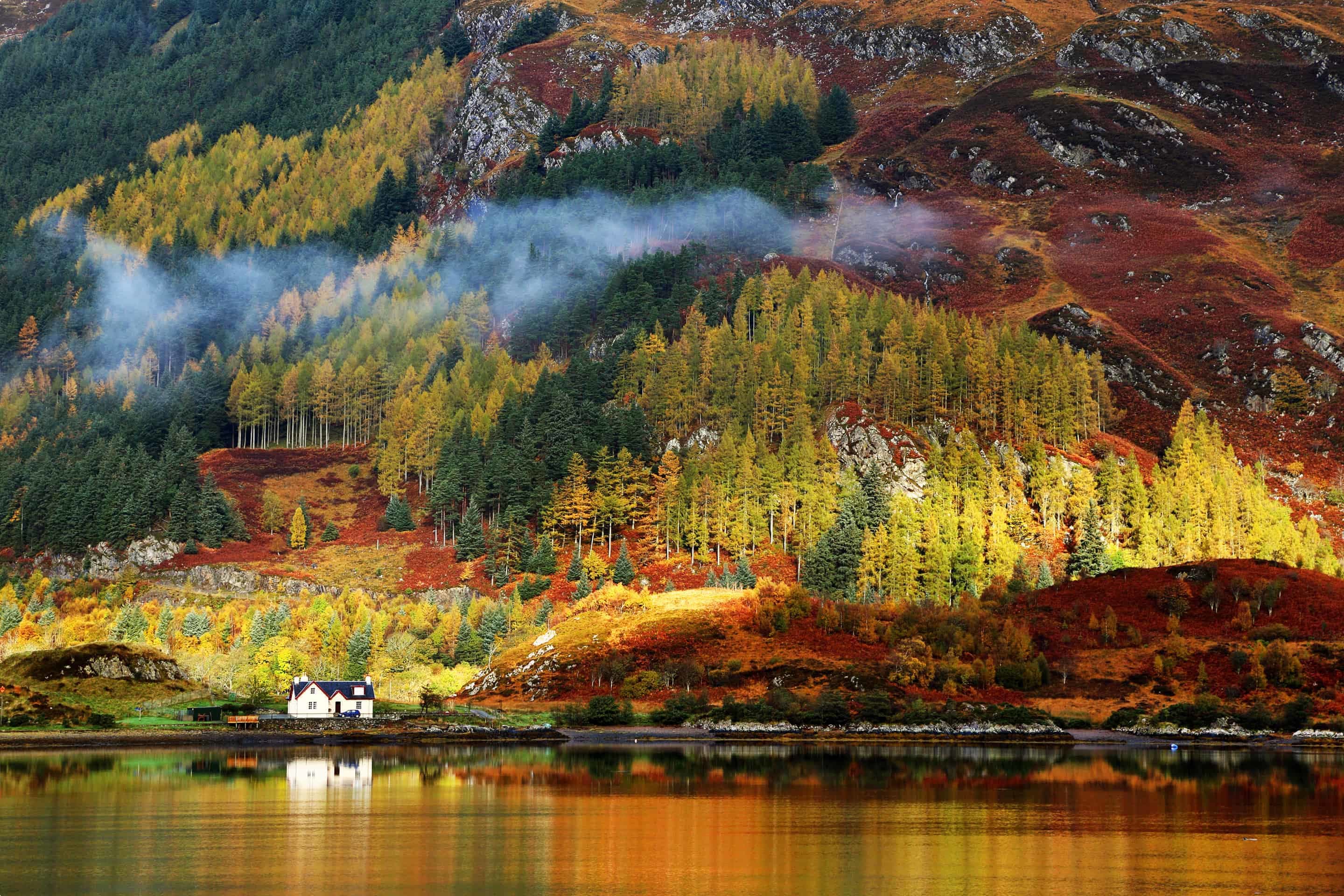
All of these changes contributed to the emergence of the Highlander as a distinct identity. The Anglo-Norman system of church and governance were introduced to the Lowlands, but the Dalriadan clan system persisted in the Highlands. Gaelic would be spoken in the region until the 19th century, and to this day Highland English displays strong influence of Gaelic in its grammar and pronunciation. The symbols we usually associate with Scotland–the tartan, kilt, claymore (two-handed sword), and bagpipe–had their origins in the Highlands.
The Lowlanders regarded the Highlanders with “mingled fear and contempt” (Smouth, 1969, p. 40), an attitude that would persist for 600 years, from the time this division was first chronicled in the 14th century.
Why the 14th century? The chaos of the collapse of Viking power in the Scottish Isles in the 13th century followed by the Wars of Scottish Independence led to a return to power of the Gaelic kings. Members of Clan Donald (also called Clan MacDonald), who were descended from the Norse-Gaelic leader Somerled, called themselves the Lord of the Isles and ruled a territory covering the Hebrides, Knoydart, Ardnamurchan, and the Kintyre peninsula. Their influence over the other chiefdoms in the Highlands gave them “the status of a second royal house in Scotland” (Smout, 1969, p. 40).
However, their power ended in 1493, when James IV of Scotland forfeited their lands and destroyed the dynasty, resulting in the worsening of hostilities between the Highlands and the Lowlands in Scotland.
Union with England
James IV’s reign would also strengthen the bond between Scotland and England. In 1503, he would marry Margaret Tudor, the eldest daughter of the English king Henry VII. A century later, in 1603 and upon the death of the childless Elizabeth I, James IV’s great-grandson and Elizabeth’s cousin James VI would ascend the English throne as King James I. The two formerly separate kingdoms now shared the same monarch. The Kingdoms of Scotland and England would be officially united under the 1707 Act of Union.

If this article piqued your interest in Scottish history, you may consider joining one of Odyssey Traveller’s tours to Scotland. Our many tours include the 20-day Scottish Isles small group tour which journeys from Glasgow, to the Isles of Mull and Skye, to the Orkney and Shetland Islands, and finally to Edinburgh, with plenty of other stops along the way. Just click through to sign up. This program is quite popular among our participants: as of June 2019, three departures are guaranteed (with one sold out!), which means the tours have reached the minimum number of participants required to operate the tour and will proceed this year and in 2020 (terms and conditions apply).
You may also read our country spotlight on Scotland and the following articles:
- Questions about Scotland
- Peat & Scotland
- Shetland Islands Discovered
- Questions about the Outer Hebrides
We also have a short feature on Glasgow and Nelson Mandela Place and an article on Scotland & Scotch whisky which you may find interesting.
The rest of our Scotland-related articles can be found here.
Updated August 2021.
Related Tours
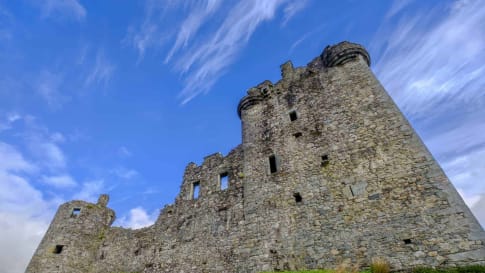
22 days
Jul, Sep, Jun, AugScotland small group tour | Tracing 5,000 years of history
Visiting Scotland
This guided tour of Scotland with a tour leader and local guides includes the isle of Skye, Orkney islands, the Scottish highlands with breathtaking scenery. Edinburgh including the royal mile, Palace of Holyroodhouse, Fort William, Urquhart castle, Stirling castle, loch lomond, Hadrians wall and New Lanark also a UNESCO World heritage site.
From A$16,795 AUD
View Tour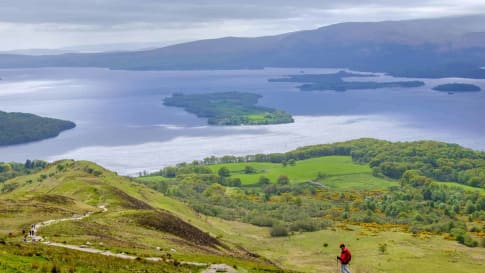
13 days
Jun, Aug, MayScotland's Great Trails Walking Tour
Visiting Scotland
An escorted walking tour of Scotland. This trip is mainly in the Scottish Highlands. Your tour leader guides you to Stirling Castle, Loch Lomond and Craignorms National park with experienced local guides. The tour for mature couples and solo travellers finishes in Edinburgh with time to visit Edinburgh Castle and the Royal mile a UNESCO World heritage site.
From A$12,135 AUD
View Tour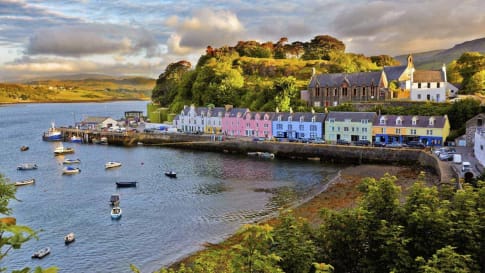
20 days
May, Jul, Aug, SepScottish Islands and Shetland small group tours for seniors
Visiting Scotland
An escorted small group tour for couples and solo travellers of the Scottish isles including the isle of Skye draws on local guides to share their knowledge of the destinations in this unique part of Scotland. UNESCO world heritage site are visited as breathtaking scenery and authentic experiences are shared in a group of like minded people on this guided tour of remote Scotland.
From A$17,525 AUD
View Tour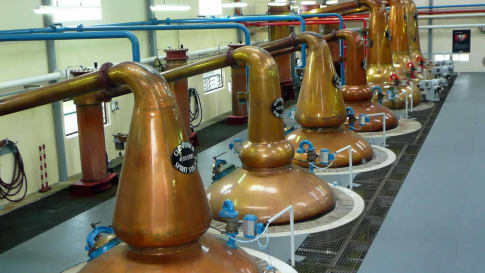
19 days
JulWhisky and Other Scottish Wonders
Visiting Scotland
A guided small group tour of Scotland is a day tour collection that includes Edinburgh, the royal mile, Edinburgh castle, and the old town a UNESCO World heritage site Experience and learn about, Kellie castle, St Andrews, Skye, Balmoral castle, Loch Lomond and Loch Ness as well touring the Scottish highlands to finish in Glasgow.
From A$18,395 AUD
View Tour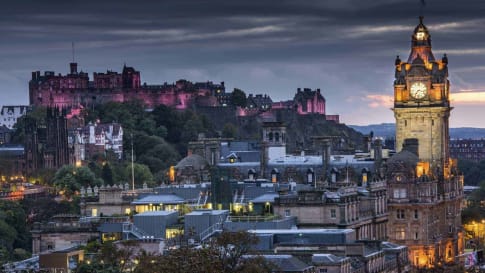
From A$15,995 AUD
View Tour
9 days
AugEdinburgh Festival Fringe Small Group Tour
Visiting Scotland
One of the few European tour companies to have in Scotland an escorted small group tour of Edinburgh during the fringe festival. As well attending performances, this trip includes time to experience, the old town, new town and the royal mile, a UNESCO world heritage site plus Edinburgh Castle and Palace of Holyroodhouse.
From A$7,215 AUD
View Tour
5 days
Jun, JulEdinburgh City Tour
Visiting Scotland
A guided tour of the capital of Scotland, Edinburgh is a day tour collection with a tour leader and local guides. The old town of Edinburgh including the Royal mile and New town of Edinburgh are a UNSECO world heritage site and are included in our itineraries as well the Palace of Holyroodhouse.
From A$4,795 AUD
View TourRelated Articles

10 great books to read on the Scottish Isles
Why read books about the Scottish Isles before travelling there? This is recommended list of books for mature & senior travellers planning to travel to the Scottish Isles either as part of an Odyssey Tour…
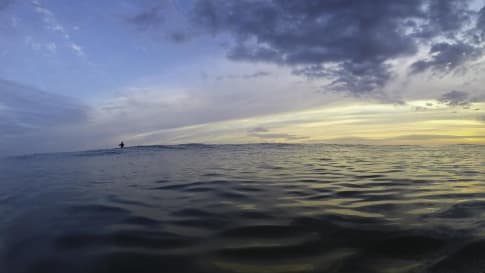
Atlantic Ocean and How it Shaped Ancient Communities In Europe
Article of interest for senior couples and mature solo travellers joining a small group European tour to Faroe Islands, Scottish Isles, Morocco or Portugal. Focus is on the early exploration of the Atlantic.

Edinburgh, Scotland
Article about the capital of Scotland, Edinburgh. Senior couple and mature solo travellers explore this city and Glasgow plus the Scottish isles in writing and on a small group tour with like minded people.

Lumps and Bumps: How to Read the British Landscape
The British landscape has been worked and re-worked. It is secrets of this palimpsest landscape is revealed through drainage patterns and prehistoric features all the way through to the modern day. These small group tours for mature and senior travellers examine the landscape from the Neolithic, to Roman, through the seven ages of Britain in walking tours and history tours of Britain.
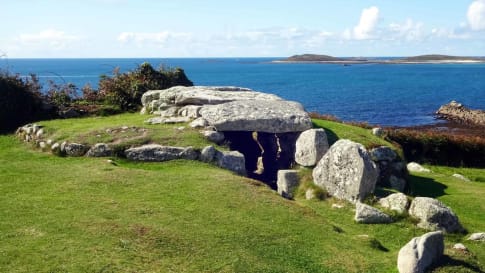
Neolithic Burial Chambers: Telescopes to the Stars
Neolithic Burial Chambers and the stars The calendar you have in your smartphone was once written in the stars. During the Neolithic or final period of the Stone Age, skies were used to mark time;…

New Discoveries about Britain's Stone Circles
Article about recent discoveries on stone circles in Neolithic Britain. Explore and learn on an educational small group tour for senior couples and mature single travellers to Scotland, Wales and England plus so much more including Australia.

Scotland & Scotch Whisky
Article for senior and mature solo and couples taking a small group tour of Scotland or the isles of Scotland including Iona, Orkney, inner and outer Hebrides to learn about the ancient history including standing stones to the industrial revolution.

Travellers exploring Glasgow's Architectural Heritage
Article about Glasgow Architectural heritage, led by the Industrial revolution, in Victorian Britain, wealth flowed to Scotland to Glasgow and Edinburgh. See and learn on a small group tour for senior couples or mature solo travelers.
